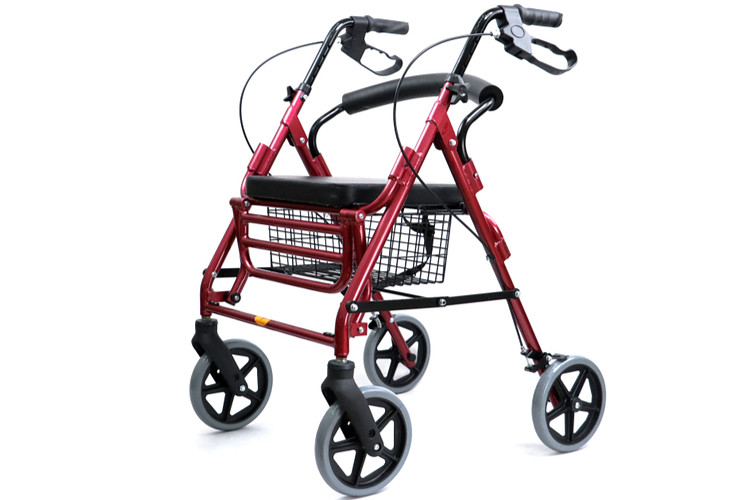A rollator is a particular type of walker with wheels on the bottom of the base, making it easier to push without lifting the walker. Many kinds of rollators may or may not have seats.
Footrests can be added to rollators. Some rollators come with built-in footrests, and others can have footrests added.
A rollator is primarily for rehabilitation purposes and is slightly different from a wheelchair made for more long-term use. However, many rollators do come with the option of footrests to be used as a wheelchair some of the time.
Table of Contents
Can Footrests Be Added to a Rollator?
Yes, if your rollator did not come with built-in footrests, footrest additions can be used with most rollators.
Most rollators come with some type of footrest for use while you are sitting in the chair. However, some options are available for those rollators that do not come with footrests.
There are no universal footrests for rollators, but many rollator manufacturers offer footrest additions for their particular models. These can be interchangeable with other brands.

However, for the most part, your rollator will either come with a footrest or it does not.
How to Install Footrests to a Rollator?
Adding or installing footrests to your rollator is usually a straightforward process.
The following is a YouTube video demonstrating how to install footrests on a rollator: How To Assemble A Rollator Wheelchair (2 in 1).
Most rollator footrests use a peg locking system for their installation. There should be hydraulic or spring-loaded pegs fixed on the rollator frame.
There should be footrests for each side. Line up the holes on the footrests with the pegs on the rollator frame. Once they are lined up, you should be able to turn the footrests inward, locking them into place.
Once they are locked in place, there is usually a handle that you can use to swivel the footrests inward and outward for when you are sitting or getting out of the chair.
The footrests on a rollator are a lot like the footrests on a wheelchair.
Should a Rollator be Used as a Wheelchair?
No, there are safety, comfort, and other difficulties involved with using a rollator as a wheelchair.
Rollators are not made to bear as much a load as wheelchairs. They are meant for pushing and sitting to rest. They are not meant for sustaining the weight of a person while moving.

Using it as a wheelchair can cause structural damage to the rollator, which can, in turn, cause injury to the person sitting. If the rollator was to break or dent, the person could fall out of the rollator, or the person could fall with the rollator as it falls.
Also, if there is no footrest, the person’s feet may be dangling above the ground. If the person’s feet were to rest on the ground while the chair is moving, they could also be injured.
The feet can also be caught in the rollator frame or wheels while being pushed if there are no footrests.
There is a small backrest meant for short rest periods. The backrest may not be supportive enough for comfort as it does not support the entire back. It may not be very comfortable sitting in a rollator for long periods or being pushed.
Typically there is no lumbar support on a rollator. This can make the ride painful for people with lower back problems, especially while sitting for prolonged periods or transport.
If there are no footrests, the rider will be holding their feet up. This can cause leg, feet, and back pain. Holding this position for a long ride will cause stress on the back, legs, and feet, making the injuries worse.
Most people using a rollator are already suffering from one or all of these pains due to injury or illness, and holding this position can exacerbate their injuries.

The push handles on a rollator were designed for a single user. The seat is usually positioned on the same side as the handles. This can make it complex for a second person to access the handles and even more challenging to control and steer with the handles. It may be difficult for the person pushing due to the lack of push handles.
Conclusion
There are specific models of rollators that come with footrests. Some of these models come with built-in footrests, and others can be added. There are others that do not have the option of footrests.
Rollators were made to be single-user walkers and for a single user to sit and rest. They are not designed to be used as a wheelchair.
Using the rollator as a wheelchair can cause damage to the rollator, injuries to the user, cause discomfort, exacerbate current injuries, and be difficult for the second person to maneuver.
If you are looking for something that provides the options of a wheelchair and a rollator, you may opt for a rollator/wheelchair combination.
We hope this answers some of your questions!

My name is Vance, and I am the owner of To Ergonomics. Our mission is to improve your workflow by helping you create a supportive and welcoming environment. We hope that you’ll find what you’re looking for while you’re here.

